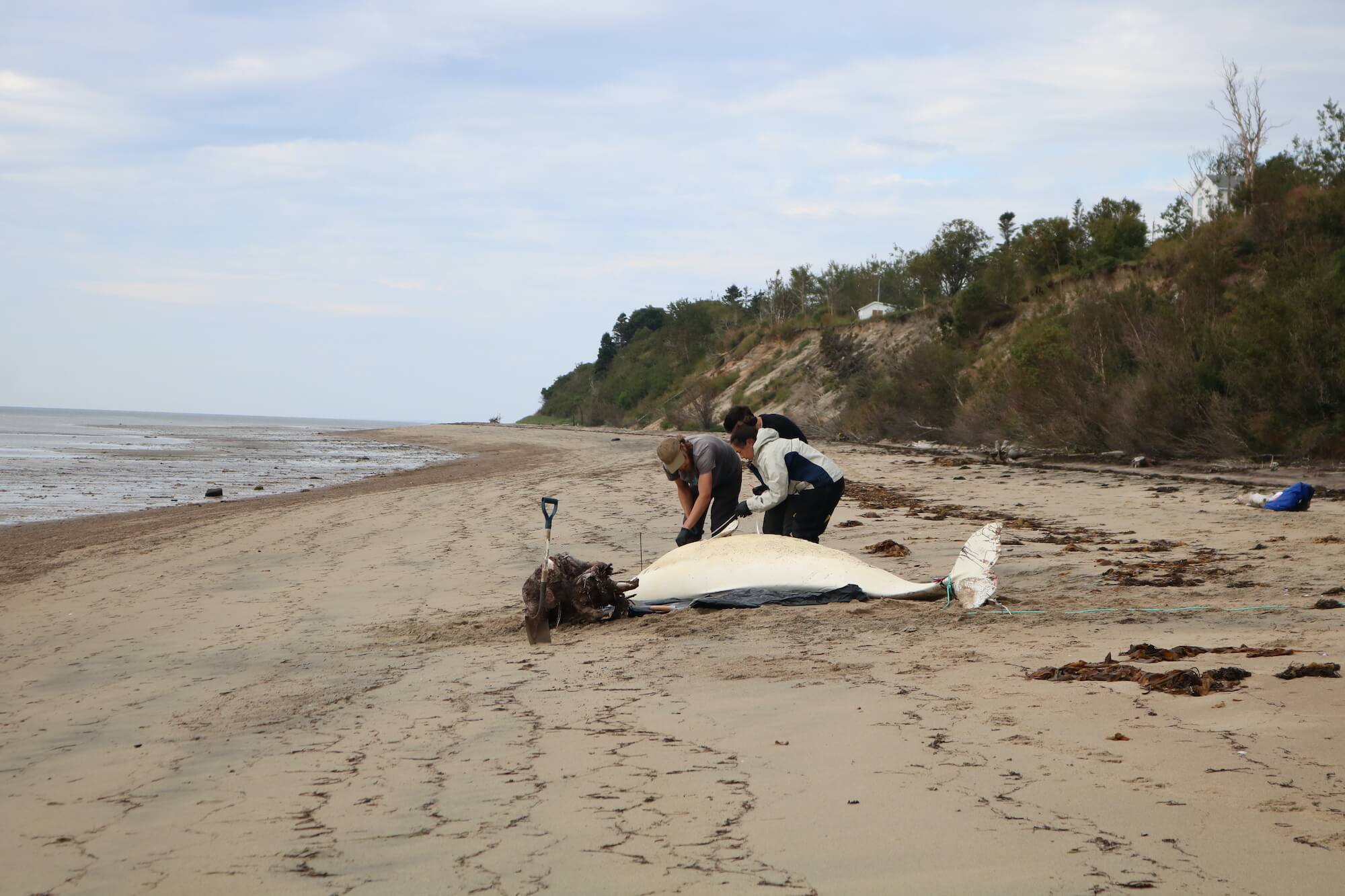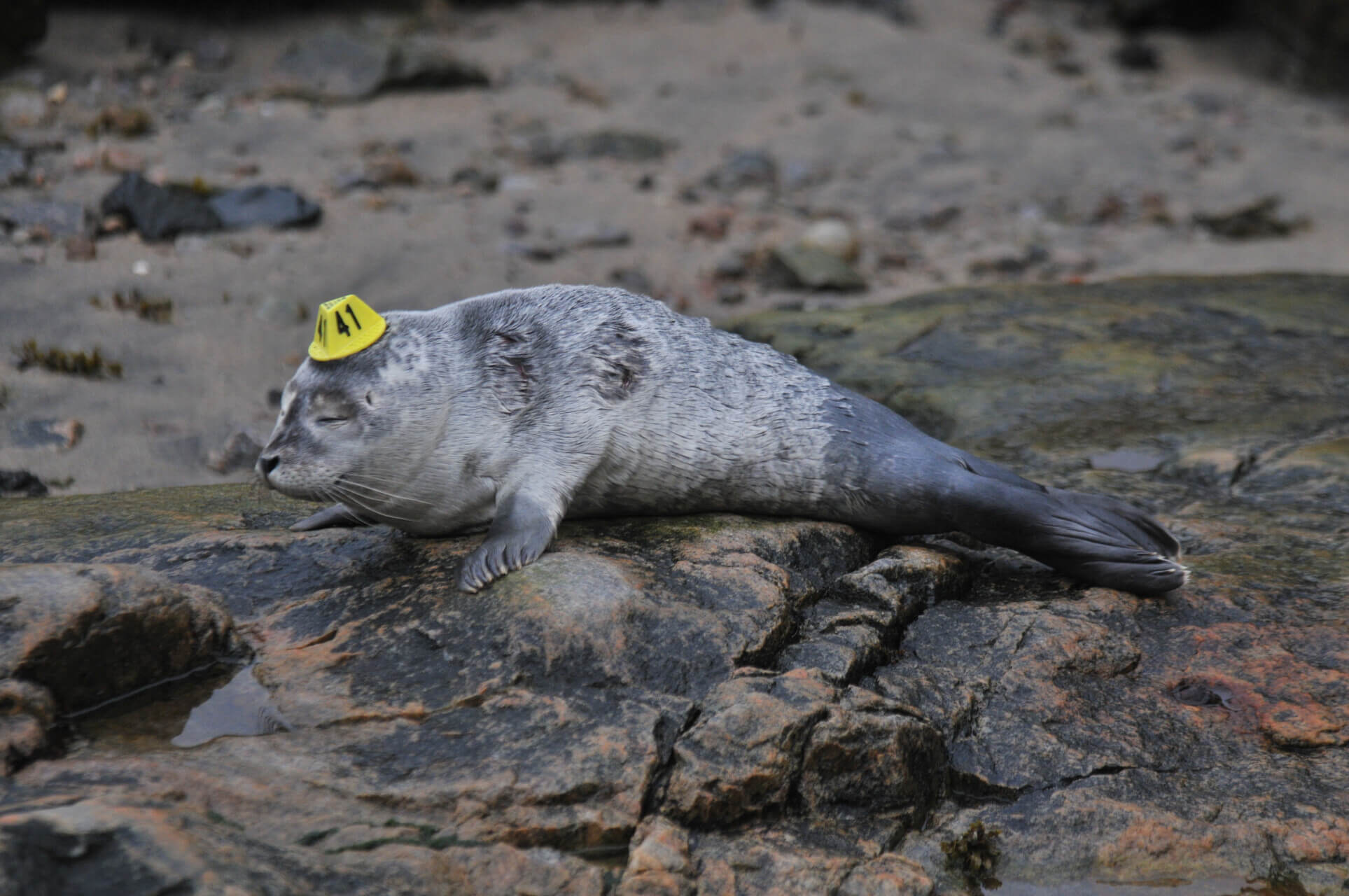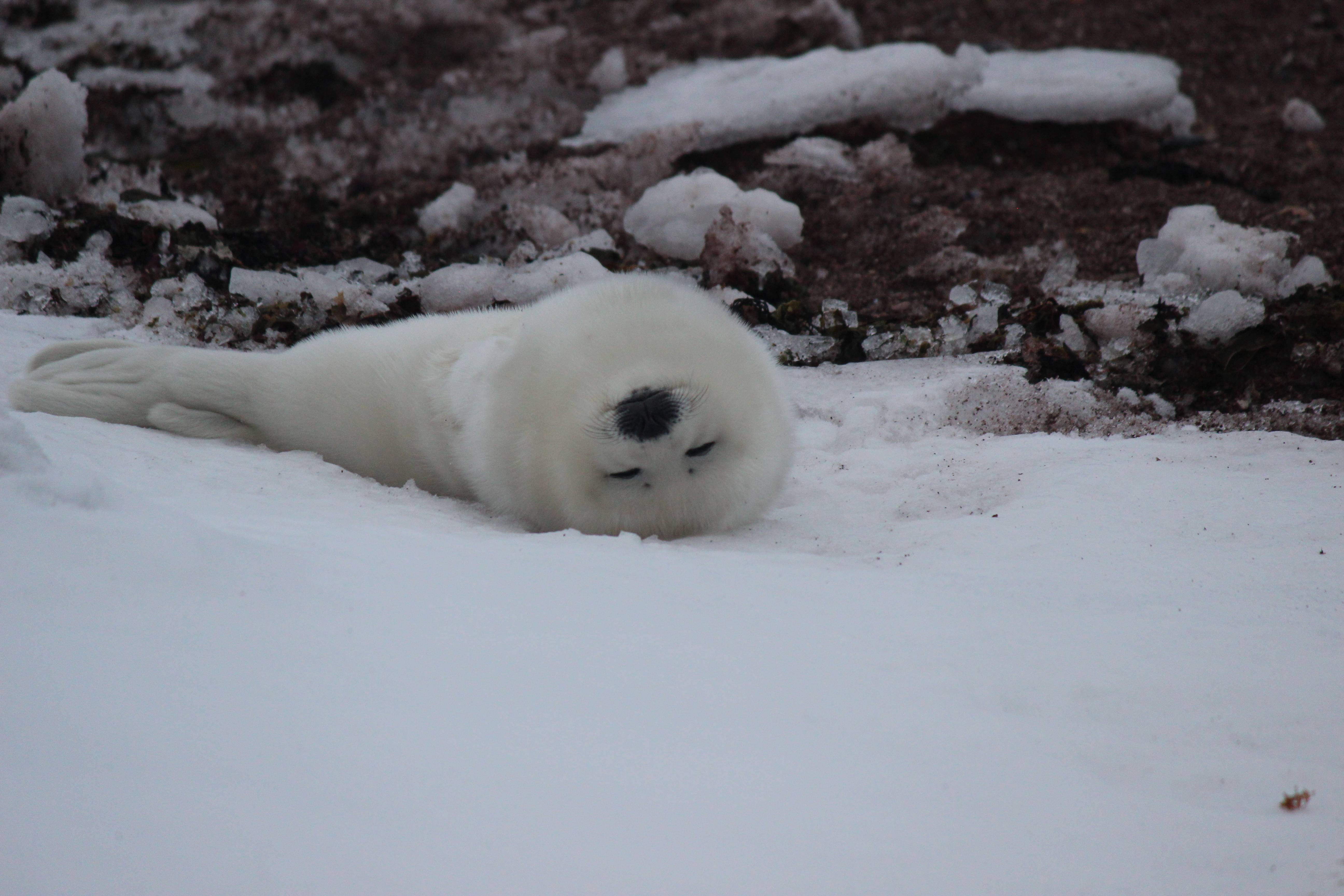On June 19, an employee of Forillon National Park discovers a fin whale carcass at the bottom of a cliff in the Cap Bon-Ami sector near the village of Gaspé. He quickly reports his find to Marine Mammal Emergencies by dialling 1-877-722-5346.
Normally, the Quebec Marine Mammal Emergency Response Network (QMMERN) would call on a volunteer to travel to the scene to document the carcass and collect samples. However, this carcass is in a particularly difficult-to-access location. The Network therefore faces a dilemma: On one hand, although the QMMERN and its partners strive to collect scientific data from the largest proportion of reported carcasses possible, the safety of their responders remains a top priority. On the other hand, as a species of special concern, the fin whale is particularly important in terms of documentation and sampling efforts.
Members of the QMMERN mobile team ultimately decide to walk down to the site on foot. They manage to develop a security plan, despite the technical complexities. Indeed, the ebb and flow of the tides leaves the team a narrow time window to complete its intervention. Additionally, the path leading down to the carcass is steep and rocky. “While trying to collect baleen from the whale’s partially submerged mouth, I realized that the tide was rising quickly,” points out Anthony François, who oversees the QMMERN mobile teams. Thus, the two responders prioritize the most important parameters in their data collection efforts in order to quickly return to a safe place before they get their feet too wet in the frigid waters of the St. Lawrence.
“Although we didn’t succeed in collecting as much data as we normally do, the experience was a good opportunity to learn about the difficulties of documenting carcasses in remote locations,” explains Anthony François. For example, the next time a similar situation arises, the QMMERN mobile teams, which began operations last year, could mobilize additional resources in order to accelerate documentation of the carcass.
Thanks to the work of the mobile team, we now know that the fin whale stranded in Forillon Park is a 17-metre-long female. Visually, the animal did not show any obvious lesions or marks to suggest an entanglement. Fisheries and Oceans Canada will analyze the skin, fat and muscle samples as well as the small baleen collected from the carcass, which may shed more light on the animal’s state of health at the time of its death. Samples will also be sent to the Mingan Island Cetacean Study, which carries out various studies on the fin whale population in the St. Lawrence.






